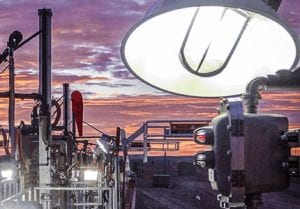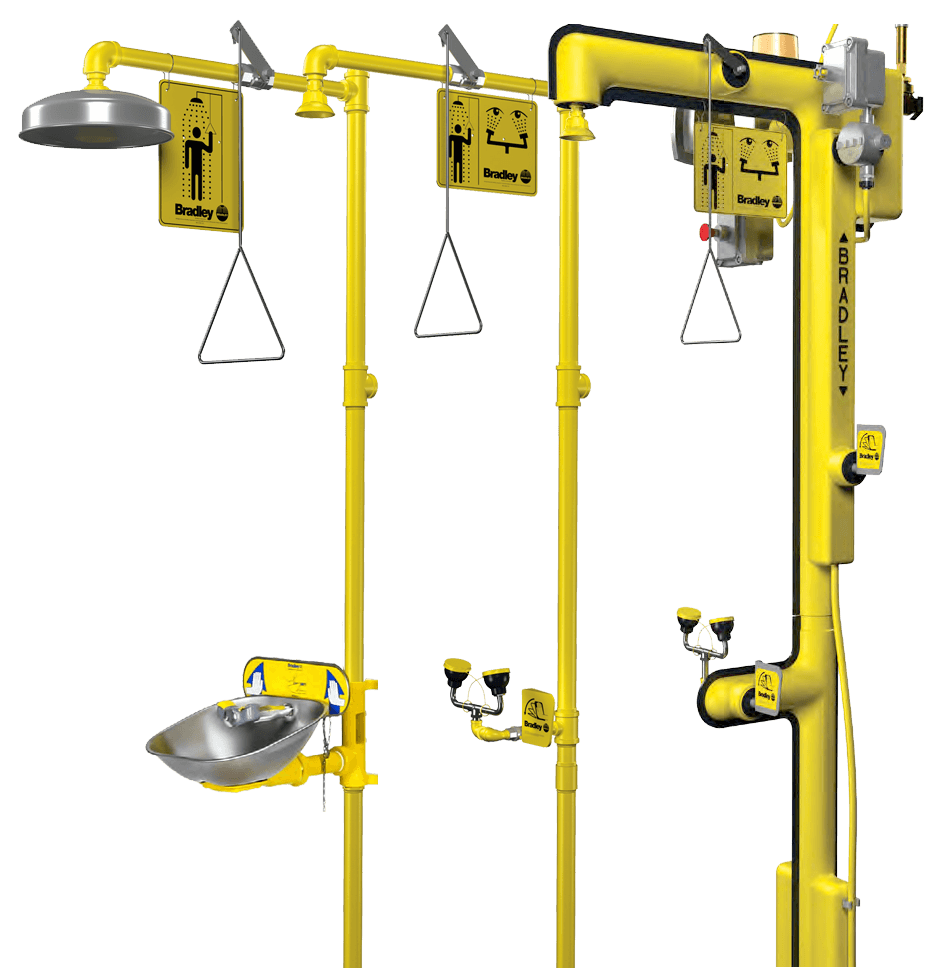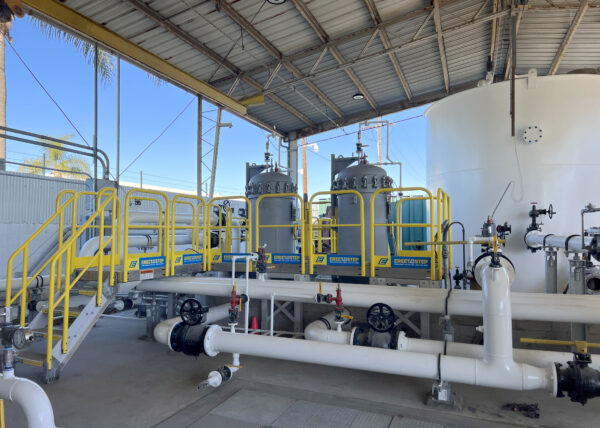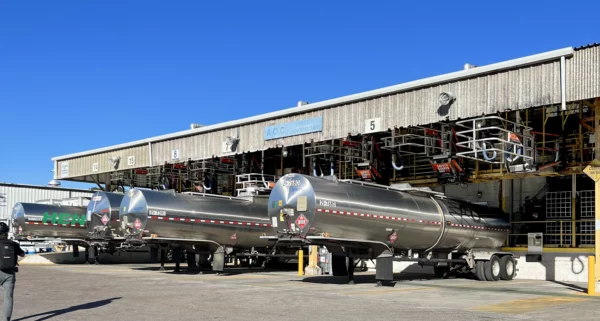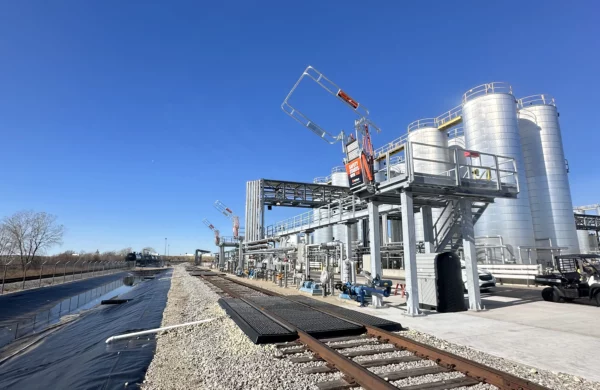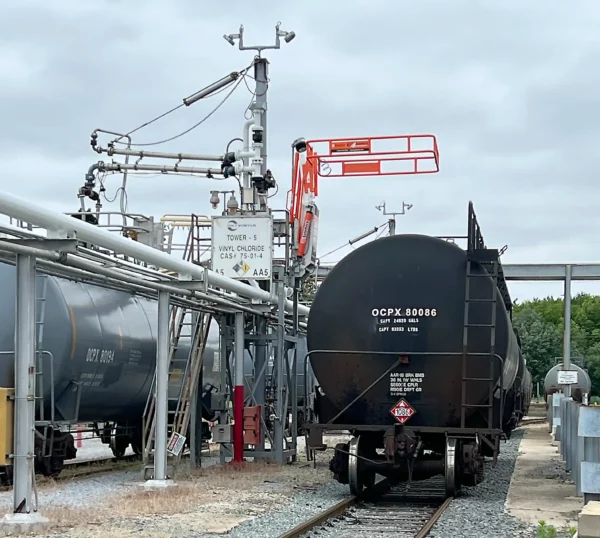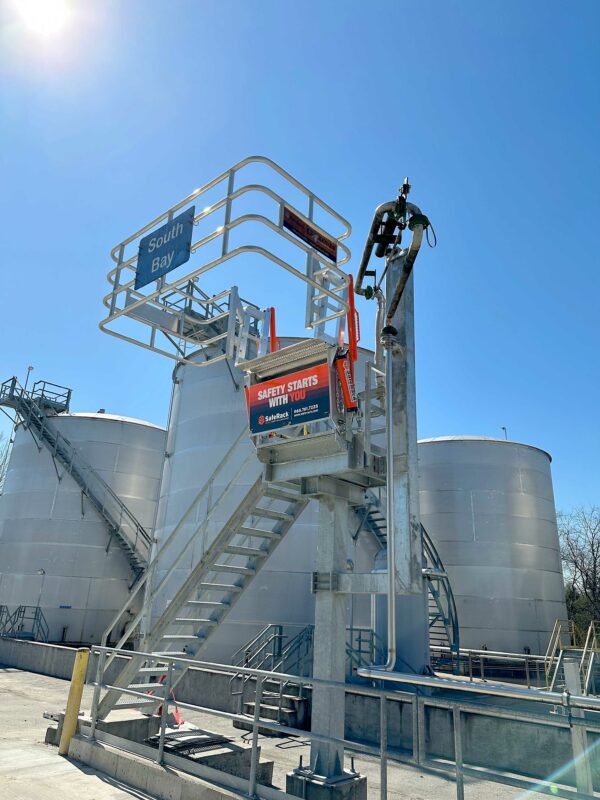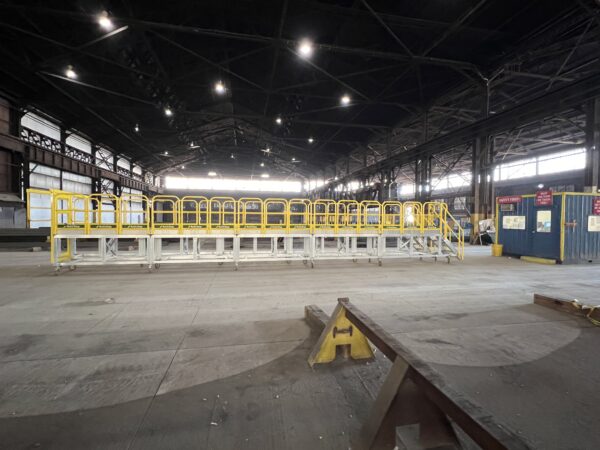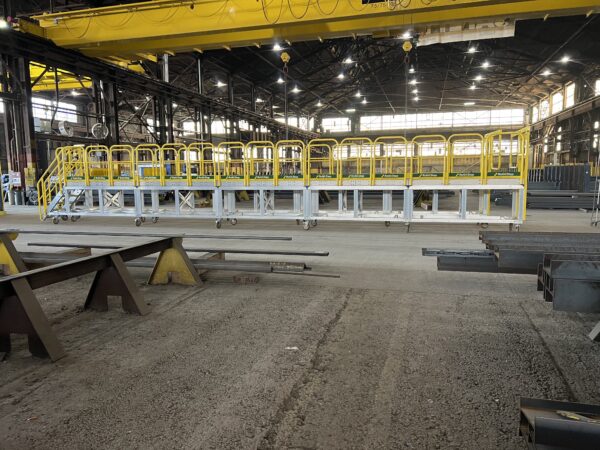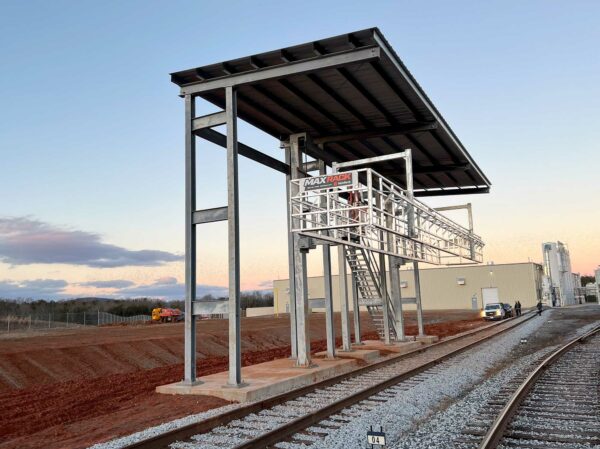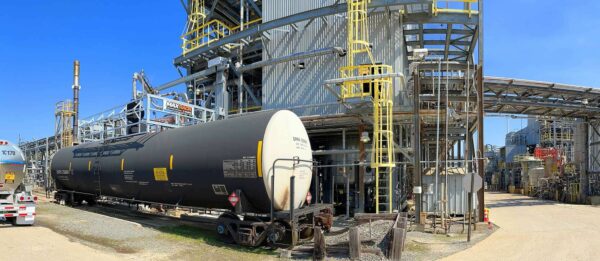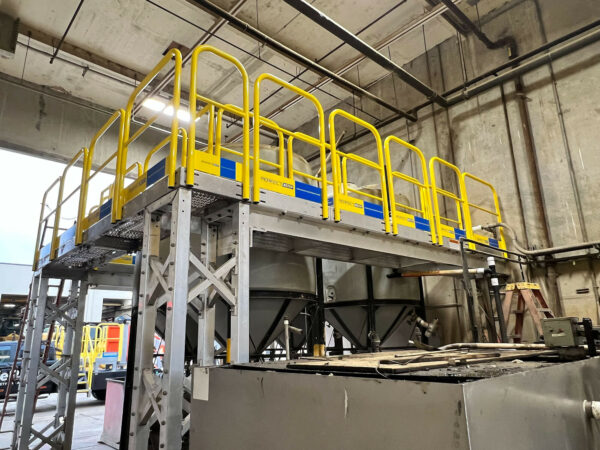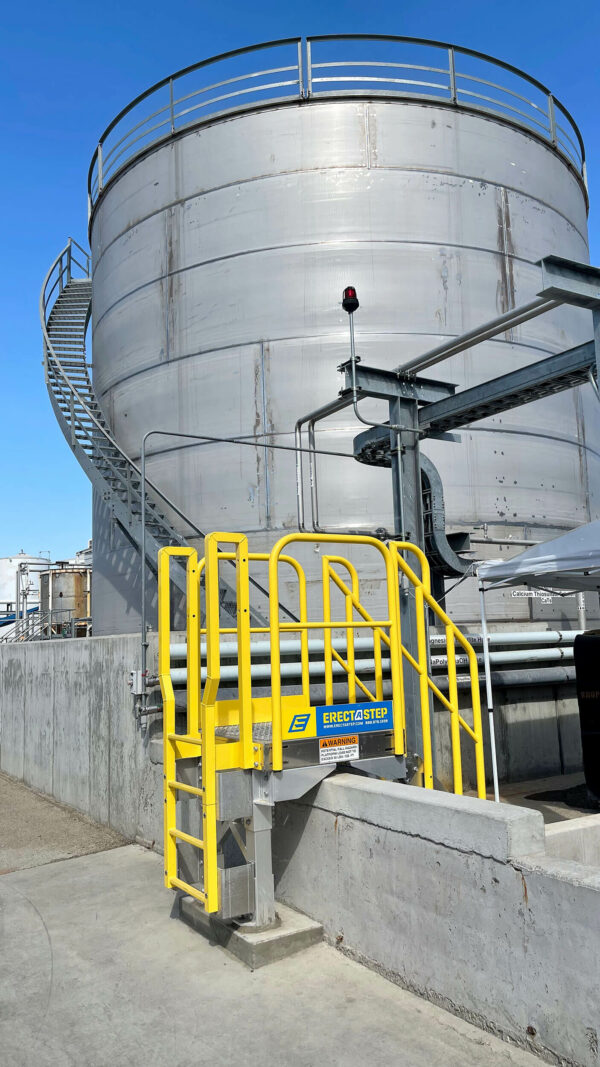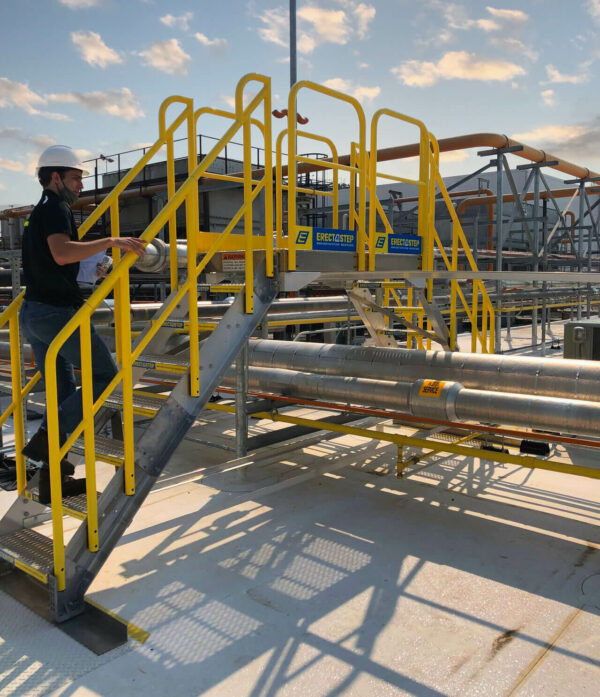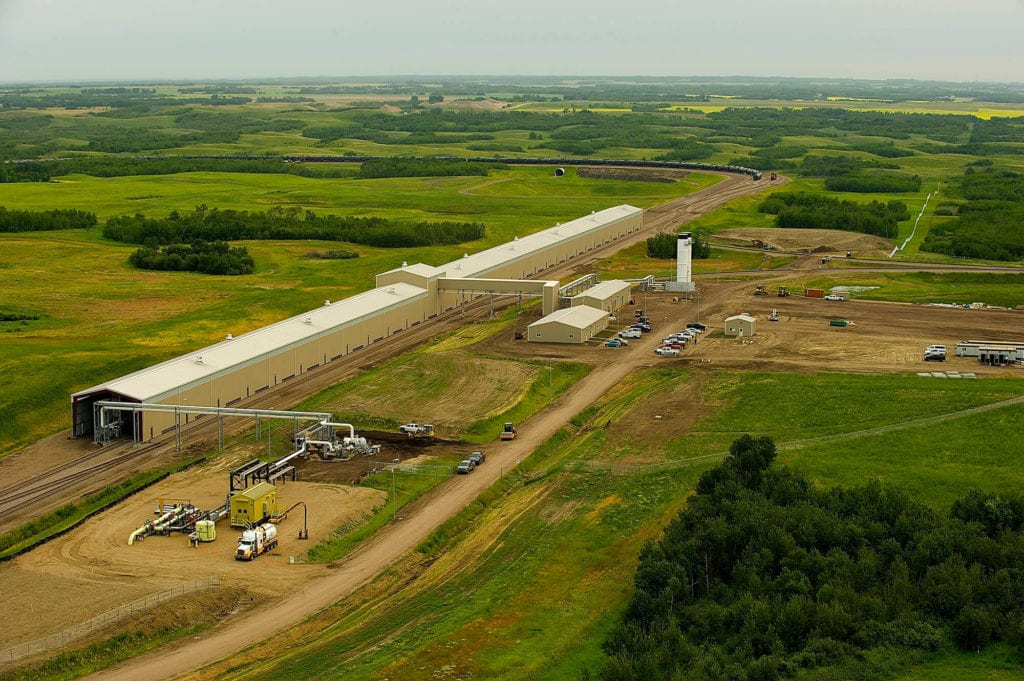Get a quote, configure a custom safety solution or ask a question. We're here to help!








- Spill ContainmentMore …Loading Safety CagesMore …
SafeRack Worldwide
We pride ourselves on one-on-one customer service. When you call SafeRack, we'll be there to answer your questions with a combined experience of 400+ years.
Select your region below.- View Products
- Railcar & Truck Loading Platforms
- Gangways & Loading Ramps
- Stairs, Platforms & Ladders
- Mobile Ladders & Platforms
- Loading Arms & Fluid Transfer
- Safety Gates & Traffic Control
- Aviation & Aerospace Access
- Marine Access & Loading
- Grounding & Monitoring
- Spill Containment
- Loading Safety Cages
- Transloaders & Skids
- Shelters & Canopies
- Fall Protection
- Terminal & Speciality
Home / Industries / Renewable Diesel Handling Design, Loading, and Installation.Renewable Diesel Handling Design, Loading, and Installation.
Although no two Renewable Diesel Loading solutions will be identical, the product itself determines much of the critical design criteria that will ensure that optimum safety and productivity can work together in harmony.
What is Renewable diesel? Renewable diesel, also known as hydro-treated vegetable oil (HVO), is made from natural waste like vegetable oil and grease. It’s also 100% renewable because it’s made from products that are constantly being regrown from the earth. The difference between biodiesel and renewable is how it’s processed, and they are not the same.
Because it’s hydrogenated, renewable diesel doesn’t contain oxygen, and therefore users will not encounter the challenges biodiesel presents relating to freezing temperature and storage. Thanks to hydrogenation, renewable diesel also burns cleaner than biodiesel. Also, because it has the same chemical structure as petroleum diesel, renewable diesel can be used in engines that are designed to run on conventional diesel fuel — with no blending required.
On the other hand, traditional Biodiesel is made through a chemical process called transesterification, whereby the glycerin is separated from the fat or vegetable oil. This process results in two by-products – methyl esters and glycerin. Methyl esters is the chemical name for biodiesel. The other by-product is glycerin is used in a variety of products, including soap.

Question, Get a Quote, Live Demo or Request an On-Site Visit
Our experts simplify the complex
View Full TextIn the United States, renewable feed stocks are typically transported via general service insulated or non-insulated 26,000 gallon DOT 111 railcars and over the road tankers. Depending on the viscosity, feedstocks may need to be heated prior to unloading. Railcars are typically top-loaded via carbon steel loading arms or chemical hoses. The rails cars themselves are ~ 9′ outside diameter with an overall length of ~45’ to 50′, with a 6’ x 6’ center opening or off-set crash box openings. Tank truck (un)loading procedures are similar to railcar applications with the trailers meeting established DOT requirements for transporting renewable diesel or other like commodities. Since operators are working at elevated heights, proper Personal Protective Equipment (PPE) is required.
Your Project
Typically, as a starting point, we will need to know answers to these questions for your project
- The Railcar connection locations need flexibility – Do you know what the breadbasket connections look like?
- Are you using liquid and vapor arms/hose as two separate devices or a piggyback arm?
- Is the loading station indoors or outdoors?
- Is the loading area temperature controlled?
- How are you going to spot your railcars
Our highly trained technical sales team will undertake a detailed site survey prior to undertaking any work to check and clarify all dimensions, obstructions, access issues and other salient points. Our challenge is to provide the safest working environment – protecting operators and the equipment – while simultaneously enabling you to improve throughput and productivity.
Your Project Needs
Whether you are looking for a turn-key installation, on-site supervision or a maintenance program, SafeRack is positioned to assist you. We can do as little or as much as you need. Our project management and supervision team is the best in the business at supporting your company’s needs.
- Collaborative Design – Our loading platform specialists will work with you one on one, if you design to design the best loading solution for your specific needs
- Contract review – drawings and associated documents relating to the contract prior to site arrival
- Risk Assessment – Undertaking a site risk assessment
- Shipment Inspection – Detection of any shipping damage or abnormalities
- Material Receiving – Supervised off-loading and transport at site
- Installation Management – Supervised Installations and Coordination
- Start-up & Commissioning – On-site training for both users and maintenance personnel
Loading Arms
Generally speaking, SafeRack recommends rigid pipe loading arms where possible for the following reasons:
- Balanced throughout their movement envelope
- Designed not to hit the ground – protecting the asset and the operator
- Ergonomic – one man operation
- Fitted with manual or actuated valves.
- Fitted with optional purge/vent facilities
- Can be moved into position with ease and left hanging in the air while the operator prepares the tanker connection
- Parked neatly
Hoses require:
- Annual pressure test
- Are difficult to stow neatly when not in use
- Can be dropped
- Can be driven over
- Are very heavy to use if fitted with a valve at the tanker connection point
- Cannot be easily heated or have vent/purge valves fitted to it
- Prone to catastrophic failure
Typical Renewable Diesel Loading Platform
Quote or discuss your installation.
Start by selecting loading application"*" indicates required fields
Below are some of the loading and unloading solutions for illustrative purposes only. Our experts will work with you and your team for a custom solution to suit your needs.
Renewable Diesel Top Loading Arms

Renewable diesel is typically loaded into railcars or tank trucks via boom supported carbon steel loading arms or chemical hoses. The loading arms will often use Viton seals, with a T deflector on the drop-pipe. The current best loading practice is to use a 3″ chemical hose or a carbon steel loading arm with quick-acting coupling, often in the form of Hammer Unions with stabber pipe. The chemical hose or loading arm will have a top inlet with a control valve to ensure that it is self-draining after use and is supported along the length of a mechanical loading arm to improve handling; this is known as a by-pass arm. You can install one liquid and one vapor arm, or mount both the liquid and vapor hoses on one by-pass arm. The alternative is to have a supported boom top loading arm, top inlet, with vapour cone, and vapour return hose. The arm would be fitted with an overfill device and the vapour hose can be fitted with an over-pressurization sensor.
Break-away couplings can be fitted near the inlet of the hose for additional safety in the event of a premature departure.
Renewable Diesel Un-Loading Arms
These will typically be self-draining carbon steel unloading arms or hoses. Connections can be flanged, may use a hammer union, or a quick acting coupler. Each arm will be rated at 150lbs and use Viton seals
Renewable Diesel Loading Gangways and Safety Cages


A wider access gangway (36″-48″ is preferable) as it helps improve access and egress to and from the vessel. In addition, a wider gangway will reduce the risk of the operator’s PPE getting caught, torn or damaged, and will improve productivity and safety. Powered gangway solutions are also an option, with both hydraulic and pneumatic solutions being commonly used. Each gangway will be fitted with a two-rail safety cage for the railcar crash box. This will be a centered 6’x6’ safety cage to sit directly over the cashbox. This will provide a safe, secure work environment for your operator when connected to their breathing apparatus
GX FLAT RAMP ACCESS (FRT) GANGWAY
SafeRack’s NEW GX-FRT is a flat ramp model popular with railcars. It features a slip-resistant walk surface and, with the use of the telescoping extension, eliminates gaps on narrow railcars. Learn More
Renewable Diesel Eye Wash/Drench Showers

ANSI guidelines state that an Eye Wash/Drench Showers need to be located 10 seconds or 55’ (16.8m) from contaminants or hazardous materials. Eyewash stations need to be on the same horizontal plane with no obstructions. Therefore, we would propose the installation of a standard combination Drench Shower/Eyewash Unit, which will save limited space and fit easily into any work environment.
Renewable Diesel Spill Containment

Spill containment pans will be provided at the point of loading operations and is an essential piece of equipment in overall site safety and environmental protection Renewable Diesel Grounding

While not highly flammable, high airborne concentrations can be ignited and pose a significant fire and explosion hazard, especially in confined spaces. Steel containers or vessels of ammonia may also explode when subject to excessive heat or high temperatures. Industry best practice includes the grounding of all vessels prior to starting the (un)loading process. - Vehicle grounding and bonding — ensure true grounding before product flow is permitted
- Explosion-proof enclosures — meet or exceed UL, CSA and Ex requirements
Renewable Diesel Safety Gates

Safety Gates will be installed at the top of stairs and any other openings to ensure operator safety at all times.  YellowGate Safety Gates
YellowGate Safety GatesSafeRack’s line of industrial safety gates is the most flexible product on the market with the ability span openings between 16” and 36” and is field adjustable with nothing more than a wrench. Learn More
Renewable Diesel Loading Platform Options

- Lighting – Lighting both over and under the platform will be provided. For overcast days or second shift, lighting is essential for improved safety and improved productivity.
- Platform & Canopies – Full platform canopies reduce exposure to the elements and improve the safe and productive loading operation from the operator’s perspective.
- Operator Shelter – Depending on your site requirements, consideration should be given to the requirement of an operator or guard building on the loading platform. This can be customized to meet specific site requirements
- Wheel Chocks – Railcar Wheel Chocks provide fast blocking of all types of railcars and meet OSHA regulations to safely prevent railroad cars from moving during loading or unloading operations. This is a requirement by the Department of Homeland Security
Personal Protective Equipment PPE Requirements
Eye/Face Protection: Wear chemical safety goggles. A face shield (with safety goggles) may also be necessary.
Skin Protection: Wear chemical protective clothing e.g. gloves, aprons, boots. Coveralls or long sleeve shirts and pants in some operations. Wear a chemical protective, full-body encapsulating suit, and self-contained breathing apparatus (SCBA). Suitable materials include: butyl rubber, neoprene rubber, Viton®, Viton®/butyl rubber, Barrier® – PE/PA/PE, Silver Shield® – PE/EVAL/PE, Trellchem® HPS, Trellchem® VPS, Saranex®™, Tychem® BR/LV, Tychem® Responder® CSM, Tychem® TK. The following materials should NOT be used: natural rubber, polyvinyl chloride. Recommendations are NOT valid for very thin neoprene rubber gloves (0.3 mm or less).
Respiratory Protection: Up to 5 ppm:
(APF = 10) Any chemical cartridge respirator with cartridge(s) providing protection against Renewable Diesel*; or Any supplied-air respirator*.
*Reported to cause eye irritation or damage; may require eye protection.
APF = Assigned Protection Factor
Recommendations apply only to National Institute for Occupational Safety and Health (NIOSH) approved respirators. Refer to the NIOSH pocket guide to chemical hazards for more information.
Use a local exhaust ventilation and enclosure, if necessary, to control the amount in the air. Consider using a corrosion-resistant exhaust ventilation system separate from other ventilation systems. It may be necessary to use stringent control measures such as process enclosure to prevent product release into the workplace. Use backup controls (e.g. double mechanical pump seals) to prevent the release of this material due to equipment failure. * For illustrative purposes only. Our experts will work with you and your team for a custom solution to suit your needs 
Customer Reviews
 5 5As always, Molly was perfect to work with.
5 5As always, Molly was perfect to work with.I would recommend SafeRack – you are always reliable. I’ve purchased this product in the past. It offers solid construction, durability and is corrosion resistant. As always, Molly was perfect to work with.
By Greg Vastbinder from NuStar Terminal Partners, TX L.P. on 9/2/16 5 5All groups communicated deliverables and shipping date well.
5 5All groups communicated deliverables and shipping date well.All groups communicated deliverables and shipping date well.
By Thad Ashcraft from NGL Energy Partners LP on 4/2/16 4 5Everyone at SafeRack was very professional.
4 5Everyone at SafeRack was very professional.Solid construction, good paint job, still light enough that all employees can use it. More stable on the railcar than the previous product used, and gives a better feeling of confidence it will work when needed. Everyone at SafeRack was very professional to talk to and got the job done as they said they would, when they said they would.
By Bruce Reed from Dow Corning on 3/27/145 5We are happy with your service.We are happy with your service.
By Ali Rahmath from Baniyas Oil Field Supplies on 7/14/11 4 5I was surprised not only at the customer service response, but the quality of the repair part and the speed it was delivered.
4 5I was surprised not only at the customer service response, but the quality of the repair part and the speed it was delivered.My recent purchase was a repair part for a previously purchased SafeRack MAUI unit. I initially had reservations about ordering a part for a unit that was 3 years old, possible issues with parts matching up and alignment match-ups, but I was surprised not only at the customer service response, Phyllis, but the quality of the repair part and the speed it was delivered.
By Kenny Zoeller from Conoco Phillips on 11/27/11 5 5Customer service was excellent.
5 5Customer service was excellent.Customer service was excellent and I received the order as promised. We now have a safer way of getting on semi flatbeds. The safety, security and accessibility are the biggest benefits.
By Tony Block from Gateway Extrusions, LTD on 8/8/16Renewable Diesel 101
Things to know about renewable diesel vs. traditional biodiesel
Because of their high flash point, greater than 200 degrees F, both renewable diesel and pure biodiesel can be transported without any DOT placards. However, blended biodiesel does require warning signs if the flash point is lower than 200 degrees F.
As mentioned earlier, biodiesel is made from a diverse mix of resources (feedstock) such as recycled cooking oil, soybean, and animal fats.
Unfortunately, biodiesel can degrade quickly due to oxidation, contact with water and/or microbial activity. In general biodiesel will degrade more quickly than petro-diesel. On one hand, this is a good thing: a biodiesel spill will biodegrade faster and not cause as many environmental issues as a diesel spill. Nevertheless, both fuels will eventually degrade if not handled properly. Biodiesel also has the tendency to gel (freeze) at higher temperatures versus petro-diesel. Therefore, storage and transportation tanks must be designed accordingly. Biodiesel has been known to be less compatible with some elastomers used in the handling of diesel, which can cause the degradation of some materials used in hoses, seals, and gaskets.
Oxidation can be another issue, which causes sediments to form in the fuel, which in turn can cause clogged fuel filters. Biodiesel made from unsaturated fats (i.e. vegetable oils) tends to oxide and degrade faster than biofuel made from saturated fats, such as animal fats.
Storage conditions are also very important. For example, biodiesel should not be stored or transported in copper, bronze, lead, tin or zinc because these metals will hasten degradation. Containers made from aluminum, steel, polyethylene or polypropylene, Teflon, or fiberglass are the recommended choice. Acceptable gasket seal material on process piping and loading arms include Teflon, Viton, and fluorinated plastics.
Heat, sunlight, and oxygen will also cause biodiesel to degrade more rapidly. In addition, if biodiesel will be stored for longer than four to five months, a stability additive should be used, especially in the deep South due to increased temperature and humidity.
Biodiesel can also degrade in the presence of water. During storage and transportation, moisture from the air, or any water in the piping or tanks can contaminate the fuel. Up to 1,500 ppm of water can dissolve in biodiesel, after that limit is reached the excess water is referred to as “free water” This free water causes engines and storage tanks to rust and allows microbes to grow in the fuel. Dissolved in water, biodiesel can cause acids to form in the fuel, which can eventually eat a hole in the storage tank or process piping.
The gel (freeze) point of biodiesel depends on the oil or fat from which it was made. Biodiesel made from saturated fats tends to gel at higher temperatures than those made from unsaturated fats. In general, pure biodiesel made from vegetable (soybean) oil can safely be stored at 45 to 50 degrees F. In cold climates underground tanks can prevent gelling. Above ground tanks will need to be heated or insulated, depending on the location.
On the other hand, the benefits of renewable diesel include:
- Doesn’t gel like traditional biodiesel
- No need to blend with diesel, unlike biodiesel which is typically blended between 5 to 20 percent.
- Compatible with existing infrastructure including current diesel engines
Only properly trained and equipped personnel should be permitted to (un)load tank cars and tank trucks. Operators should wear approved PPE equipment including impervious clothing, footwear, gloves, and goggles. Operators should avoid breathing mists and sprays, and they should wash any exposed skin thoroughly after handling.
First aid measures for exposure to renewable diesel include – removing operators from the source of exposure and into fresh air. Remove contaminated clothing immediately; wash skin thoroughly with soap and water; flush eyes with tepid water for 15 minutes. If ingested do not induce vomiting, but immediately call your local poison control center. Aspiration into the lungs can cause fatal chemical pneumonitis. If ingestion has occurred, assume there is a risk of aspiration into the lungs.

Is your plant or facility compliant with ANSI, OSHA, and local safety codes? We can help!


EMERGENCY EYEWASHES / SHOWER EQUIPMENT AND THE ANSI/ISEA Z358.1 – 2014 STANDARD
Following eye contact, you must start washing with water immediately to prevent permanent damage. In the event of skin contact, you must start washing with water immediately to prevent slow-healing chemical burns.
Are you aware that ANSI guidelines state that Eye Wash/Drench Showers need to be located 10 seconds or 55′ from contaminates or hazardous materials and located on the same horizontal plane, with no obstructions? If bottom loading/unloading, an additional shower should be located at grade as well. SafeRack provides the above equipment plus much more needed to keep employees safe and expedite bulk chemical loading and unloading.
OSHA Regulation Experts – Does your existing chemical safety equipment or chemical loading systems meet OSHA’s latest requirements? SafeRack’s professional technical sales consultants are available to meet with your team to make recommendations to keep your facility in front of OSHA’s ever-changing country and region-specific standards and regulations, including lifeline and trolley beam fall arrest systems, metal stairs, and access platforms.
Why SafeRack?
The SafeRack approach is a collaborative one. Let’s call it The SafeRack Way. We have, over many years amassed a great deal of experience and understanding of the safety aspects involved in loading road tankers and railcars, as well as the behavioral habits of the operators.

Experts In Chemical Loading
- Acetic Acid
- Acetic Anhydride
- Acetonitrile
- Acrolein
- Acrylic Acid
- Acrylonitrile
- Aluminum Chloride
- Aluminum Sulfate
- Ammonia
- Ammonium Hydroxide
- Ammonium Nitrate
- Aniline
- Benzene
- Benzyl Chloride
- Bromotrifluoromethane
- Butadiene
- Carbon Dioxide
- Caustic
- Chlorine
- Chloroform
- Chlorosulfonic Acid
- DEF (Diesel Exhaust Fluid)
- Diethylene Glycol
- Dimethylformamide
- Dodecylbenzene Sulfonic Acid
- Ethanol
- Ethyl Acetate
- Ethyl Chloride
- Ethylene
- Ethylene Dichloride
- Ethylene Glycol
- Ethylene Oxide
- Ferric Chloride
- Ferrous Chloride
- Hexane
- Hydrochloric Acid
- Hydrofluoric Acid
- Hydrofluorosilicic Acid
- Hydrogen Cyanide
- Hydrogen Peroxide
- Hydrofluoric Acid
- Hypochlorous Acid
- Isopropyl Acetate
- Liquid Argon
- Liquid Nitrogen
- Liquid Oxygen
- Maleic Anhydride
- MDI
- Methanol
- Methyl Chloride
- Methyl Ethyl Ketone
- Methyl Methacrylate
- Methyl Isocyanate
- Molten Sulphur
- Nitric Acid
- Oleum
- Phenol
- Phosphoric Acid
- Phosphorus Oxychloride
- Phosphorus Trichloride
- Polypropylene
- Renewable Diesel
- Sodium Cyanide
- Sodium Hydroxide
- Sodium Hypochlorite
- Styrene Monomer
- Sulfuric Acid
- Sulfur Dioxide
- Titanium Tetrachloride
- Toluene
- Toluene Diisocyanate
- Turpenitne
- UAN (Urea Ammonium Nitrate)
- UREA
- Vinyl Acetate
- Vinyl Chloride
- Xylene
- Zinc Chloride
- Agro-Chemical
- Specialty Chemical
- Petrochemical

North America’s largest loading terminal
World-leading designer, manufacturer, and installer of truck and railcar loading platforms
As one of the primary railcar loading points, Hardisty is one of the major crude oil hubs in North America and a major origination point of pipelines that export to the United States. SCS was asked to supply and construct a SafeRack crude oil loadout terminal spanning nearly half a mile. The USD Hardisty terminal can load up to two 120-railcar unit trains per day and consists of a fixed loading rack with 62 railcar loading positions enclosed, separate control, operator, and mechanical buildings, as well as a unit train staging area and loop tracks capable of holding multiple unit trains simultaneously. SCS also supplied and installed boom-supported loading arms with supply and vapor management systems.

Quick Quote 866-761-7225
LET US DESIGN YOUR SOLUTION TODAY
Our innovative tools provide 3D visualizations and accurate quotes in minutes.
Get Help NowOrder Now 866-761-7225
Questions or Need a Quote?
Chat live with a knowledgeable and friendly safety expert now.

Bob Kashtan
Located in South Carolina

Joey Robinson
Located in South Carolina

Caelin Lacy
Located in South Carolina

Katie Kelly
Located in South Carolina

Amber Graham
Located in South Carolina














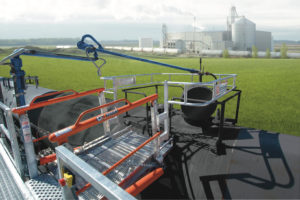
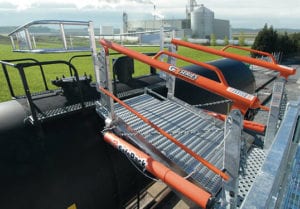


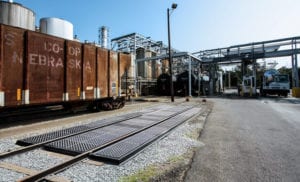

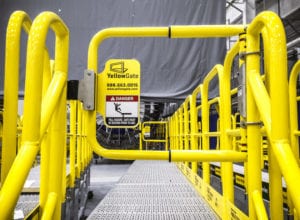
 YellowGate Safety Gates
YellowGate Safety Gates